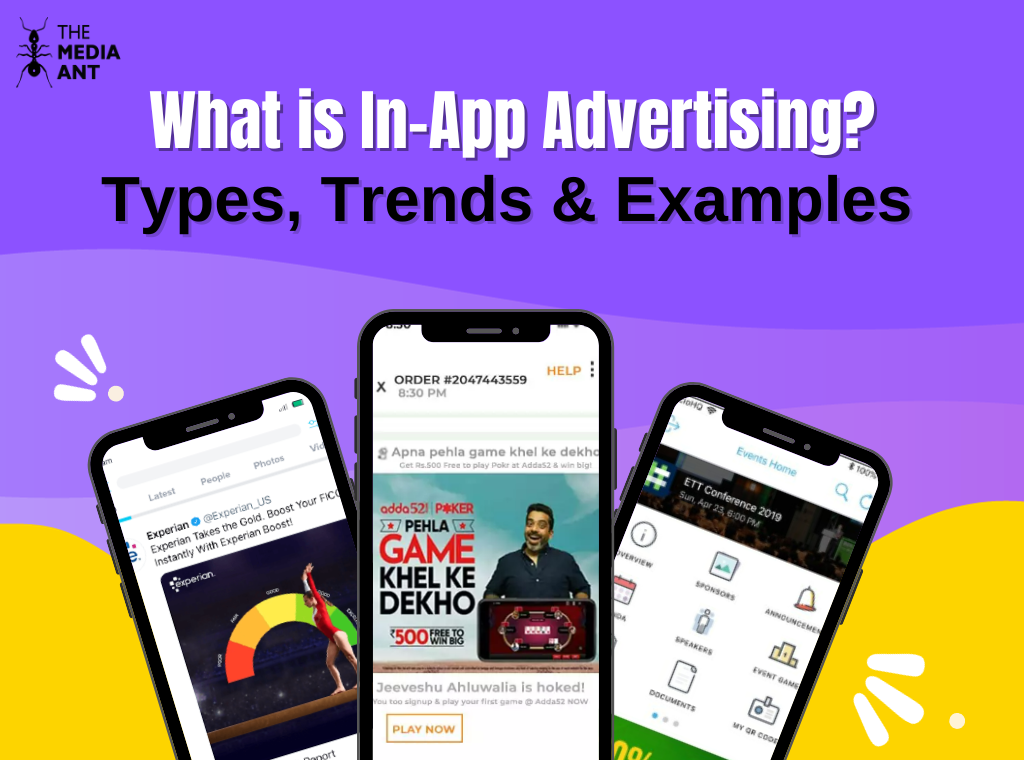Nowadays, with the increasing number of smartphone users, you may have observed the appearance of advertisements while scrolling through your favourite applications. This is known as in-app advertising, which serves as a subtle yet effective method for businesses to connect with you without being overly intrusive.
Let’s delve into it further. In-app advertising involves placing advertisements within mobile applications. These ads are not randomly inserted; they are carefully designed to seamlessly integrate into your app experience. Whether you are playing a game or catching up on the latest news on your tablet, these ads are strategically positioned to capture your attention and encourage interaction.
These ads come in various formats, such as display ads, video ads, native ads, and engaging interactive promotions. The objective is to ensure that they do not feel like bothersome interruptions but rather something that complements your app usage.
In-app advertising can be likened to a chameleon in the realm of digital marketing, blending in with your app activities and providing businesses with an opportunity to reach you in a manner that feels organic and unobtrusive. So, the next time you come across an ad while crushing candies or reading the latest gossip, remember that it is all part of this ever-evolving world of digital advertising.
Why is In-App Advertising Important?
In today’s digital marketing landscape, the importance of in-app advertising cannot be overstated. This strategy offers a unique combination of targeted engagement, seamless integration, and measurable outcomes, making it a pivotal tool for businesses.
1. Audience Immersion
One of the key advantages of in-app advertising is its ability to immerse the audience in a seamless user experience. By seamlessly integrating promotional content into mobile apps, advertisers can capture users’ attention and foster engagement. This immersive environment increases the chances of users noticing and responding to the advertising messages.
2. Targeted Relevance
Furthermore, in-app advertising allows for highly targeted and personalised campaigns. Leveraging user data and behaviour within apps, advertisers can tailor their messages to resonate with individual users’ specific interests and preferences. This precision ensures that the promotional content is relevant and impactful, maximising the effectiveness of the advertising campaign.
3. Mobile Dominance
The dominance of mobile devices in today’s society further emphasises the importance of in-app advertising. With the exponential growth of mobile device usage, businesses have a direct and effective channel to reach a vast audience. As people spend a significant portion of their digital time on mobile apps, in-app advertising enables businesses to establish a direct connection with their target demographic.
4. Enhanced User Experience
In addition to its targeting capabilities, in-app advertising also enhances the overall user experience when executed properly. Well-integrated ads avoid disrupting or irritating users and, instead, provide valuable content or exclusive offers. This not only improves the user experience but also increases the likelihood of users engaging with the advertising content.
5. Measurable Performance
Measuring the performance of advertising campaigns is crucial for optimising results, and in-app advertising offers robust analytics and tracking capabilities. Advertisers can accurately measure metrics such as impressions, clicks, and conversions, providing valuable insights for continuous optimisation. This data-driven approach allows advertisers to refine their campaigns and achieve better results over time.
6. Monetisation Opportunities
Lastly, in-app advertising presents monetisation opportunities for app developers. By incorporating ads into their applications, developers can generate revenue, often supporting the provision of free apps to users. This creates a win-win situation where developers can monetise their apps while users can enjoy free access to valuable content.
Types of In-App Advertising
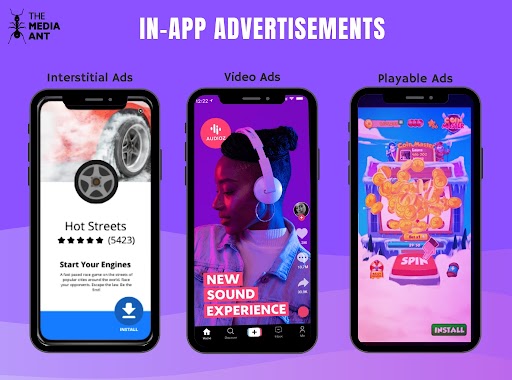
In-app advertising comprises a variety of formats, each designed to captivate users in distinct manners. Here are a few notable categories:
1) Banner Ads
Banner advertisements are showcased either at the upper or lower section of the application interface, appearing as either static or animated images. These ads maintain a non-intrusive nature, ensuring a continuous presence without disrupting the user’s overall experience.
2) Interstitial Ads
Interstitial ads are full-screen advertisements that appear at natural breakpoints within the app experience. These ads are frequently observed between levels in a game or during transitions.
3) Native Ads
Native ads are specifically designed to seamlessly blend with the content of the app and match the overall appearance and user interface.
4) Video Ads
Video ads, on the other hand, are captivating short video clips that grab the attention of users. They can be shown as pre-roll, mid-roll, or post-roll ads.
5) Interactive Ads
Interactive ads engage users by incorporating interactive elements such as playable demos, quizzes, or in-ad games.
6) Rich Media Ads
Rich Media ads go beyond static visuals and include audio, animations, and interactive features to create a dynamic advertising experience.
7) In-App Rewards Ads
To encourage user interaction, ads offer in-app rewards such as virtual currency, power-ups, or exclusive content.
8) Overlay Ads
Overlay ads are semi-transparent and appear overlaid on the app’s content without fully covering it.
9) In-App Video Ads
In-app video ads are similar to regular video ads but are specifically tailored for in-app environments, ensuring seamless integration.
10) Playable Ads
Playable ads allow users to interact with a condensed version of a game or app before downloading it, providing a preview of the overall experience.
By understanding these various types of in-app advertising, advertisers can choose the most suitable format based on their campaign goals, target audience, and the nature of the mobile application.
In-App Advertising Trends
The realm of In-App Advertising is constantly evolving, propelled by emerging trends that have a significant impact on the industry. Below are a few noteworthy trends that are shaping the landscape of In-App Advertising:
1) Interactive and Immersive Experiences
Modern trends in in-app advertising place a strong emphasis on interactive and immersive experiences. Advertisers are utilising augmented reality (AR) and virtual reality (VR) to create captivating and memorable interactions within apps, effectively capturing users’ attention and enhancing brand recall.
2) Programmatic Advertising
The prominence of programmatic advertising is growing within the in-app space. Through automated and data-driven ad placements, advertisers are able to efficiently reach their target audiences. This trend enhances the precision of ad targeting, optimising ad spending and maximising the impact of in-app campaigns.
3) Personalization and Targeting
Personalised advertising experiences are on the rise, with in-app ads tailored to individual user preferences and behaviours. Utilising advanced data analytics and machine learning algorithms, advertisers can deliver content that aligns with each user’s interests, fostering a more meaningful connection between the user and the advertised brands.
4) Video Dominance
Video content continues to dominate in-app advertising. Short-form videos, interactive video ads, and in-app video streaming contribute to a dynamic and engaging user experience. Advertisers leverage the popularity of video content to convey compelling messages and effectively capture the user’s attention.
5) In-App Purchase Advertising
An emerging trend in in-app advertising is in-app purchase advertising, where brands collaborate with app developers to seamlessly integrate promotions directly within the app’s purchase process. This approach ensures that advertising is non-intrusive and potentially rewarding for the user, as it becomes an integrated part of their interactions within the app.
6) Native Advertising Integration
Native advertising is another trend that seamlessly blends with the overall app interface, providing users with a non-disruptive and integrated experience. This trend focuses on maintaining the app’s aesthetics while delivering relevant promotional content, ultimately enhancing user engagement and acceptance of in-app ads.
7) Data Privacy and Consent
The growing concerns surrounding data privacy have had a significant impact on in-app advertising trends. Now, there is a strong emphasis on transparent data practices and obtaining user consent. Advertisers are prioritising the respect of user privacy and compliance with regulations, which in turn fosters trust and positive relationships with users.
8) 5G Technology Impact
The emergence of 5G technology has greatly influenced in-app advertising. With faster and more reliable connectivity, it is now possible to deliver high-quality, bandwidth-intensive content such as high-definition videos and augmented reality experiences. This enhances the overall quality of in-app advertisements and provides a more immersive user experience.
9) In-App Header Bidding
In-app header bidding is revolutionising the ad monetisation landscape. This trend allows multiple advertisers to bid for in-app ad space in real-time, maximising revenue for app developers. The highest bidder’s ad is then displayed, ensuring that app developers can generate the most income from their ad space.
10) Sustainability and Social Responsibility
Furthermore, in-app advertising is increasingly reflecting broader societal values. Advertisers are incorporating sustainability and social responsibility themes into their campaigns, aligning with user expectations for brands to make positive contributions to environmental and social causes. This shift in advertising practices not only resonates with users but also helps to create a more socially conscious and responsible advertising industry.
In-App Advertising Platforms
Various platforms have emerged in in-app advertising to facilitate flawless integration and effective campaign management. These platforms cater to the diverse needs of advertisers, providing tools for targeting, tracking, and optimising ad performance. Some in-app advertising platforms include:
1) Facebook Audience Network

Facebook audience network leverages Facebook’s ad targeting capabilities for in-app advertising across a network of mobile apps. It provides detailed insights and analytics to optimise campaign performance.
2) Unity Ads

Unity ads are designed explicitly for gaming apps; they focus on delivering engaging and rewarded video ads to gamers and integrate seamlessly with Unity game development platforms.
3) Chartboost
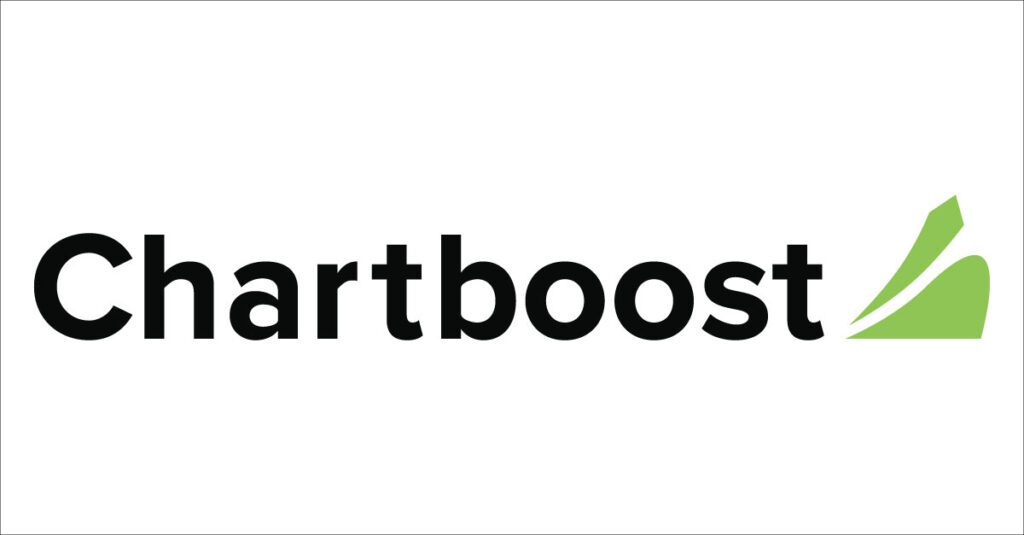
Chartboost is tailored for mobile game developers; They offer a platform for in-app advertising and monetisation. They also feature a direct deals marketplace for ad placements.
4) MoPub

MoPub is owned by X (Formerly known as Twitter). It is a comprehensive monetisation platform for in-app advertisements, allowing real-time bidding and ad network mediation.
5) AppLovin

AppLovin offers a comprehensive platform for app developers, including in-app advertising and monetisation solutions. It emphasises user engagement and interactive ad experiences.
6) IronSource
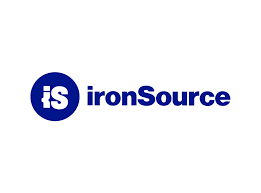
IronSource provides a platform for in-app advertising and mobile monetisation, particularly for gaming apps, by offering mediation services to optimise ad revenue.
7) AdColony

AdColony specialises in high-definition video ads for mobile apps, focusing on delivering immersive experiences and is known for its Instant-Play technology for faster ad loading.
In-App Advertising Examples
Many brands and businesses have successfully implemented creative campaigns in the diverse in-app advertising landscape. Some notable examples include:
1) Nike Training Club
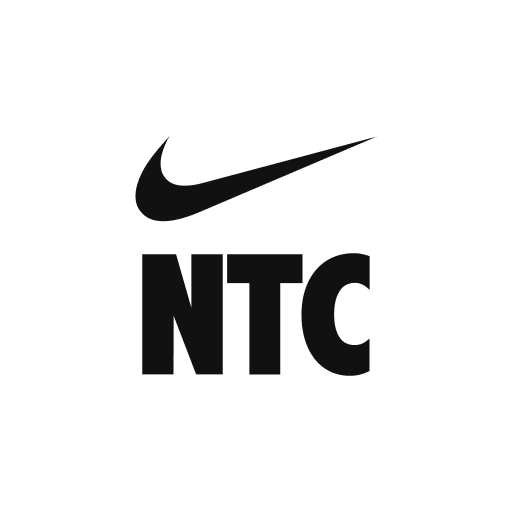
- Utilises in-app advertising to promote its training app within fitness and lifestyle applications.
- Engages users with interactive and personalised content.
2) Candy Crush Saga
- Integrates in-app advertising through rewarded video ads, allowing users to earn in-game rewards.
- Provides a non-disruptive way to monetise the app.
3) Instagram Stories Ads
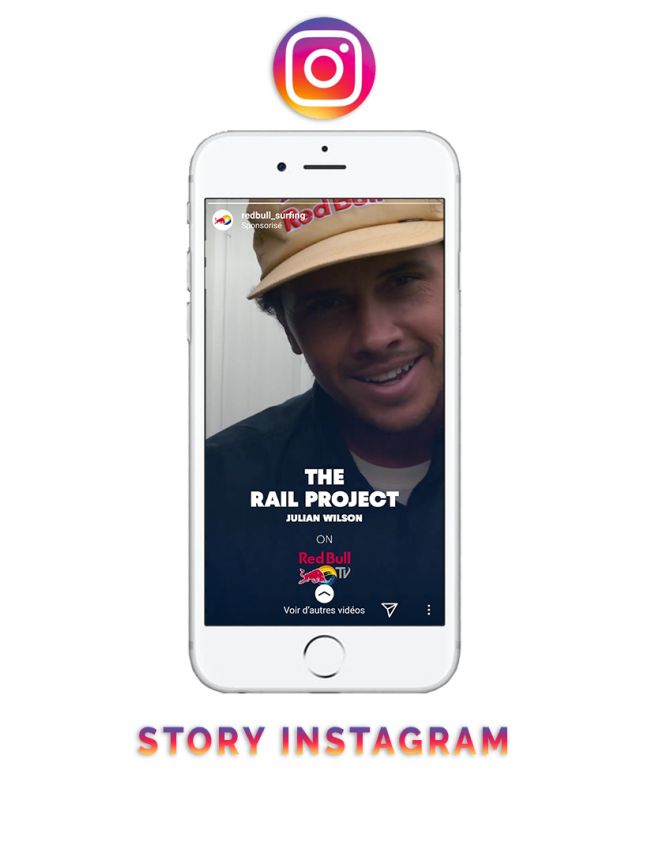
- Leveraging the popularity of Instagram, businesses utilise Instagram in-app advertising within Stories for a visually appealing and immersive experience.
- Taps into the engaged Instagram user base.
4) Spotify

- Incorporates in-app advertising to promote premium subscriptions and exclusive content.
- Adopts a targeted approach based on user preferences and music listening habits.
5) Duolingo

- Implements in-app advertising to promote language learning courses and premium features.
- Integrates ads seamlessly into the app interface without disrupting the learning experience.
FAQs Related to In-App Advertising
What is in-app advertising?
In-app advertising pertains to promotional material strategically positioned within mobile applications. These advertisements seamlessly blend with the app’s interface to attract user attention and convey marketing messages directly within the user’s mobile experience.
How effective are in-app advertisements?
In-app advertisements can vary in effectiveness depending on several factors, including targeting, ad format, and user engagement. When executed well, these ads can be highly effective, providing precise targeting capabilities, immersive experiences, and the potential for increased user interaction.
What is the meaning of an ad in-app?
An in-app ad refers to a promotional message or visual content that is displayed within a mobile application. These ads can come in different forms, such as banners, interstitials, videos, and native ads. The key feature is that they seamlessly integrate into the app’s interface, ensuring that they enhance the user experience without causing any disruption.
How big is the in-app advertising market?
The market for in-app advertising has experienced significant growth, driven by the increasing use of mobile devices. According to the latest statistics, the global in-app advertising market is valued at billions of dollars, and it is expected to continue expanding in the future.
What are the pros and cons of in-app advertising?
Pros:
Firstly, it allows for precise targeting based on user data, demographics, and behaviours, ensuring that the ads reach the intended audience. Secondly, immersive ad formats enhance user engagement, increasing the chances of the message being retained by the users. Lastly, app developers can generate revenue by incorporating ads, often offering free apps to users.
Cons:
Some users employ ad blockers, which can limit the visibility of in-app advertisements. Poorly implemented ads can disrupt the user experience, leading to negative perceptions of the app. Additionally, advertisers must navigate privacy regulations to ensure compliance and obtain user consent for data usage.
Overall, in-app advertising can be a highly effective marketing strategy when done correctly. By considering factors such as targeting, ad format, and user engagement, advertisers can maximise the potential of in-app ads to reach their desired audience and achieve their marketing goals.

